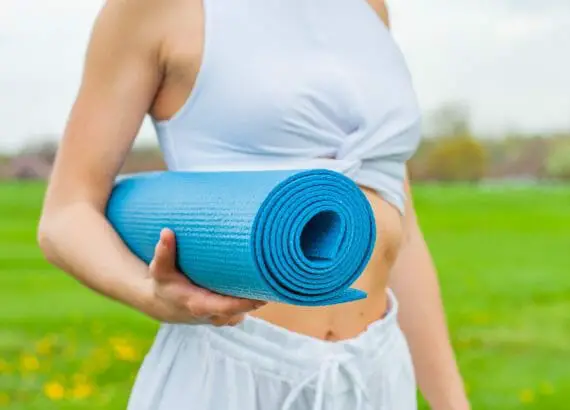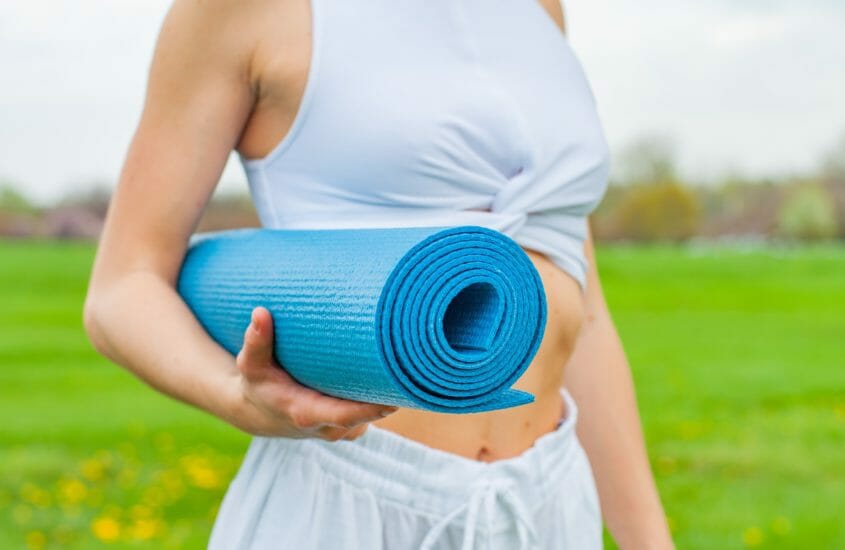If you’re new to yoga, it can be overwhelming to find the right mat. There are so many materials and styles available that it’s hard to know where to start. The most important features of a good yoga mat are comfort and durability, but there are other factors that should also be considered before making your purchase. We’ve created this blog post as an overview of the four mistakes people make when buying a yoga mat. Let’s discuss-
What you will learn
Four Mistakes People Make When Buying a Yoga Mat:
Not considering personal needs
If you are looking to start yoga or have practiced yoga for years, your mat should match your needs. Beginners should use a thin mat while advanced yogis can get away with using thick mats.
If you’re practicing Vinyasa or Ashtanga, you will need an extra-long and wide mat that allows for a full range of movement. If you are looking to do more stretching- then you should purchase a mat that has a little less cushion.
If you are looking for a mat to use at home, then it may be more cost-effective for you to purchase a thinner mat, as thicker mats can break down and wear out quicker during your daily routine. Many people do not realize the four big mistakes people make when buying a yoga mat, but they are important things to look for.
Buying too short or too long
Many people do not realize the difference in the sizes of yoga mats. If you get a mat that is too short, it will not cover your feet and can cause problems with balance.
How can you measure the right size of mat for you?

You will want to measure yourself from your toes up the whole length of your body and then add at least two inches on both ends. This should be a perfect measurement for anyone as this is what most manufacturers use when they are designing their mats, but if it’s not- don’t worry! You can always cut down any mat if needed.
How can you avoid buying a mat that is too long? Look at the specifications of the product. A mat that is too long will not be as comfortable to use and can become annoying. If you want a mat for travel, it may work better if the length of the mat is shorter so it doesn’t weigh or take up more space in your bag.
Buying without reading reviews
A lot of people do not want to waste their time reading all the reviews associated with a product. They feel that the reviews are not worth their time.
However, this could be a huge mistake, because you may end up buying something you will regret. You may also realize later that there was an issue with it.
Reviews can help people really see how well the mat is made and decide for themselves if they want to buy that brand. The best way to scroll through the various reviews is to read the most recent ones and go from there.
It’s important that you are reading reviews because sometimes, a yoga mat will have defects or it may not be made of high quality. It’s better to find out about these types of things before buying one so then you can spend your money on something valuable.
Type of Material
Thinking you need a synthetic mat is a common mistake that people make when buying a yoga mat.
Synthetic mats are more for those who sweat frequently or need to clean their mat often. They can be helpful in these cases, but the majority of yoga mats should not be synthetic, because they don’t hold up well over time. Synthetic mats are also the more expensive types.
What type of materials should you look for?
Here are some types of materials and some details behind them:
Natural Mat
Natural material yoga mats are made out of mat-friendly fabric like cotton or latex rubber.
These yoga mats provide a soft surface, which is great for people who need to practice yoga as part of their fitness routine and don’t want the mat causing any joint discomfort.
Cotton yoga mats are better to buy if you are looking for something that is lightweight. They are good to use in practice because they offer some grip and are easy on the joints. Keep an eye out for ones without PVC or latex as well!
Natural materials like cotton, hemp and jute mats are often soft and provide good grip as well since there’s no coating on them that will eventually wear.
Rubber Mat
If you’re going for a rubber mat, they are heavier and have more durability than natural materials, but there is less grip on them so be careful when practicing your poses! One last thing to mention about these mats is that they also tend to hold up better over time, unlike synthetic or cotton ones.
Synthetic Mat
Synthetic mats are a great option if you want something lightweight, durable, and grippy, but they can be slippery at times. Some yoga instructors often advise using a cleaning pro and mat spray to really put the grip back on.
PVC Mat
And finally, PVC mats can provide a very good grip for those that want to practice their poses with a little more intensity. These mats can be hard on your joints, so if you’re looking to practice yoga for health reasons then it may not be the best option.
Conclusion
If you want to get the best bang for your buck, then it’s important to consider what you want from a mat. Do you need something that provides a good grip for more intense poses? Or, are you looking for one that is soft and gentle on the joints?
Whatever your needs, there’s bound to be a yoga mat out there for YOU that will meet your needs.
Happy shopping!
